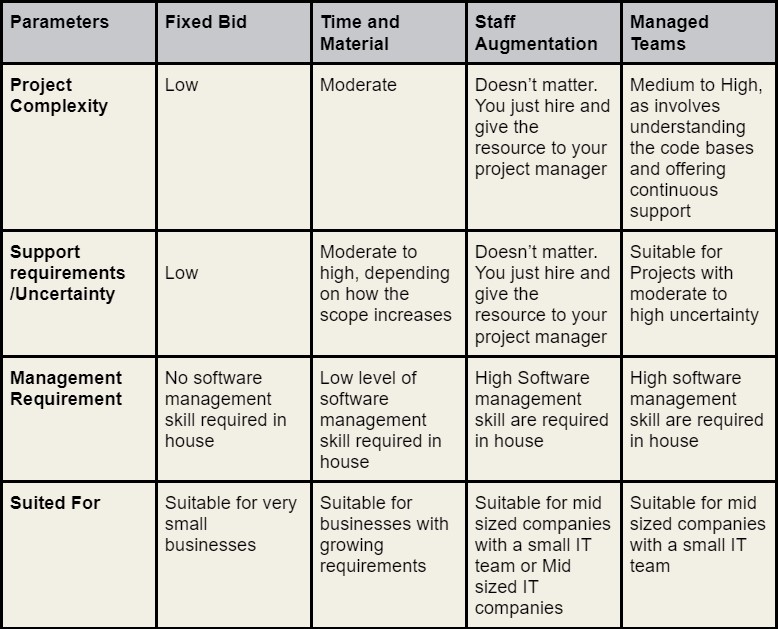Tips For Mastering Code Control in Offshore Development
In the current IT world, many organizations have shifted to outsourcing for software development. Although it provides access to more skilled employees and cost advantages, codebase control worries can be a major obstacle.
This blog provides a step-by-step process for ensuring complete control over your codebase when you are working with offshore development teams, and this is designed especially for CEOs and CTOs. You may take advantage of offshoring savings while lowering risks and preserving the integrity of your work of art by putting all of this into practice.
Considering a mid-stage company with a focus on managed teams, offshore development, and staff augmentation, we are aware of the challenges associated with navigating the offshore environment. We focus on forming lasting partnerships with offshore businesses rather than just delivering code. This blog shares our experience to give you the resources and procedures required for offshore projects that succeed.
Key Steps for Offshore Code Control
The following are the essential procedures to keep your codebase under control when working with offshore development teams:
1. Daily push your code to Git with Version control:
A distributed version control system (DVCS) like Git is essential to keeping your codebase's entire history as it is. It makes it possible for developers to work together easily, keep track of changes, and roll back to earlier versions.
Make it clear in your policy that developers must submit their work to the central repository (such as GitHub or GitLab) at least once every day. It allows your internal team to see the code in real-time and generates frequent backups.
2. Do Coding Reviews Weekly or Biweekly:
Develop a thorough code review procedure whereby assigned team members, internal or external, carefully review the code to ensure that it complies with best practices, functionality, and coding standards.
Depending on the size and complexity of the project, schedule weekly or biweekly code review meetings. It guarantees code quality, enables information sharing, and enables quick error discovery.
3. Development and Approval of Pull Requests (PR):
Make sure pull requests (PRs) are used before integrating work into the main branch. The developer submits modifications in a PR for other team members to consider and discuss.
Develop a specific procedure for PR approval. Senior developers or assigned code reviewers usually do this by making sure the code is working, high-quality, and follows coding standards. By limiting the number of PRs that are merging into the main branch, it reduces the number of iterations.
4. Including SonarQube in the Development Process:
Make use of SonarQube and other static code analysis tools. SonarQube is a tool that you can integrate into your development pipeline to automatically scan code for security flaws, defects, and code smells that will prevent future issues.
SonarQube integration makes early problem detection possible, which speeds up bug fixes and enhances the ease of code maintenance.
5. Using a Multi-Layer Testing Method:
Follow the practice of a complete testing plan that includes both automated and manual testing.
Manual testing, performed by in-house or remote testing employees, ensures that the application operates as created from the user's point of view.
To develop unit, integration, and end-to-end (E2E) testing, invest in automated testing frameworks such as Apache JMeter and Selenium. Every build includes automated tests that find changes quickly and cut down on the amount of time needed for manual testing.
Build a Relationship with the Offshore Development Team:
Since the steps listed above offer a solid basis for codebase control, building a strong relationship with your offshore development partner is just as important. Here's how to make your relationship stronger:
Honesty and clear communication: Maintaining transparent relations through regular project meetings, daily stand-ups, and clear documentation will avoid misunderstandings and ensure consistency of objectives.
Knowledge Transfer: Give importance to knowledge transfer meetings where the offshore developers receive project insights, best practices, and coding standards from the internal team. It reduces integration problems and promotes code consistency.
Team building and on-site visits: If at all possible, think about scheduling frequent on-site visits to promote bonding and build a stronger work environment.
Top Benefits of Managed IT Services
You will experience a lot of advantages by putting these strategies into action, such as:
Decreased Bug Risk: Automated testing, static code analysis, and daily code reviews reduce the possibility of bug-free coding in production.
Better Code Quality: Codebase control encourages focusing on code quality, resulting in a more stable and maintainable codebase.
6. Security of Version Control:
Specific access controls should be implemented in your version control system. You can use this to specify various levels of access for developers, reviewers, and other members of the team.
Set up two-factor authentication (2FA) for all developers having access to the repository. It improves protection and makes it more difficult for unauthorized people to enter your codebase.
Regular Backups: Keep regular backups of your codebase in a safe place. In the event of unplanned data loss or security breaches, this provides a layer of security.
7. CI/CD or continuous integration and delivery:
Automate the build, test, and deployment processes by implementing a CI/CD pipeline. It reduces the possibility of problems during deployments and enables faster iteration cycles and issue fixes.
CI/CD gives you clear access to the development process, making it possible to monitor development and spot problems. By doing this, the entire development lifecycle becomes easier, and performance will increase.
8. Non-Disclosure Agreements (NDAs):
A protective measure for intellectual property. Before beginning the work, have all offshore developers sign NDAs. It enables them to protect your codebase and other sensitive information legally.
To make your code more difficult to figure out and analyze, take into consideration code encryption strategies. It could be an extra security measure that makes extremely sensitive code. Consider the benefits and drawbacks carefully because it might also make maintenance more difficult.
9. Tracking and Logging:
Keep an eye on changes and develop a mechanism to monitor any codebase modifications. It enables you to view the modifications that were made when they were made, and by whom.
Use Git's complete version history to track the development of your codebase over time. It can be helpful for troubleshooting problems and, if needed, rolling back to earlier versions.
Configure centralized logging for your program. It enables you to keep an eye on how applications behave, and instantly, you can see any possible security flaws and mistakes.
10. Creating a Stable Teamwork:
Accept and understand cultural differences when working with remote employees. Improved understanding and communication will result from creating a workplace that encourages.
Regular Reviews of Performance: Develop a routine for your offshore development team's performance reviews. It enables you to monitor their progress, resolve any issues, and make sure they stay up to your expectations.
Invest in training and development. Give your offshore developers guidance and training opportunities so they may develop professionally. It helps them become more skilled and develops an idea of closeness and commitment to the success of your business.
Choose Techno Tackle for the Best Offshore Development Services
With the integration of these technical best practices and a focus on developing trust and communication, you may effectively take advantage of outsourcing while maintaining control over your codebase. Remember that outsourcing needs to be a collaboration instead of cutting costs. You may create an ideal relationship with your offshore development partner by working to offer high-quality software applications and ensure successful project deployment.
Techno Tackle is specialized in managed teams, offshore development, and staff augmentation, we know how important it is to establish solid connections. We work closely with offshore businesses to ensure effective offshore experiences, going above and beyond just delivering code. Our employees will help you put the procedures described in this guide into reality, offering the knowledge and assistance required to maintain codebase control and reach your software development objectives.
If you are ready to take the next step? Contact us today to discuss your specific needs and how we can help you navigate the world of offshoring with confidence.







